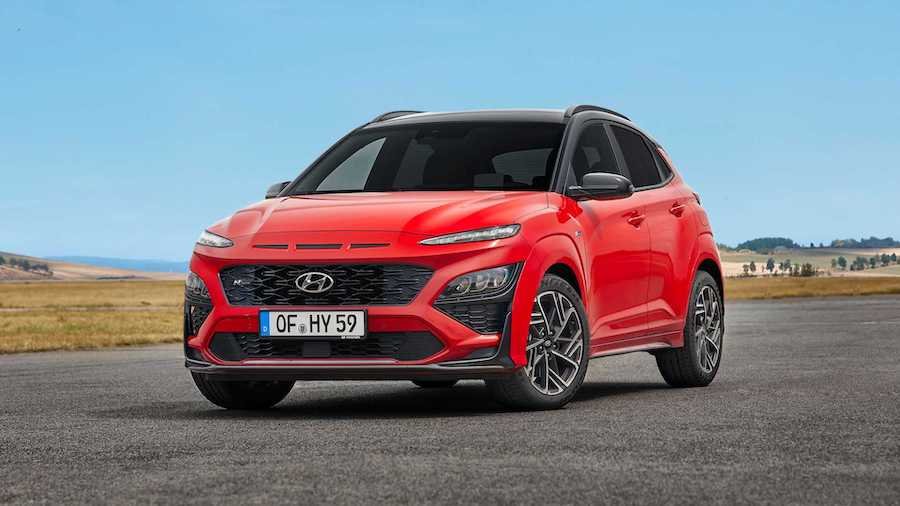Hyundai Kona Debuts Major Exterior Update, Sporty-Looking N-Line Pack

Hyundai introduced the Kona in June 2017, following the trend of funky-looking compact crossovers. It's appearance ushered in a new design language for Hyundai's high-riding vehicles, but today, Hyundai is updating that look for the 2021 model year. The 2021 Kona receives a new exterior appearance, interior design tweaks, changes to the available powertrains, and the new N-Line package.
The most significant changes are on the outside, where Hyundai has reworked the vehicle's entire look, making major adjustments to the front and rear fascias. The split-headlight design of the current Kona continues, but it sits on an entirely new face – a new grille, new headlights, updated DRLs, new intakes, a repositioned Hyundai badge, and more. It's a sharp upgrade over the outgoing look. There are similar changes at the rear with new taillight graphics, updated lighting elements, and a redesigned bumper.
Changes for the Kona N-Line package, available for the entire Kona lineup of engines, are more substantial, with wider air intakes, body-colored wheel arches, a prominent rear diffuser, unique 18-inch wheels, a dual-tip exhaust, and more. The badge stays in the grille, and there are now three "nostrils" above it on the leading edge of the hood that help enhance the sportier appearance. While the N-Line pack is available across the Kona's range of powertrains, those who opt for the N-Line with the 1.6-liter turbocharged engine and all-wheel drive will receive "specific steering tuning."
The 1.6-liter mill, introduced earlier this year in the Elantra N-Line, isn't a surprise. It'll make 198 horsepower (147 kilowatts) in the crossover, and is only available with a seven-speed dual-clutch auto. Hyundai is also offering both the 1.6-liter diesel and 1.0-liter gasoline engines with 48-volt hybrid tech. The 136-hp (101-kW) diesel can pair with either a seven-speed dual-clutch automatic or six-speed manual gearbox, and all-wheel drive. The smaller 1.0-liter mill makes 120 hp (89 kW), though it's available without the hybrid system. The Kona Hybrid model carries over with the updated styling.
Inside, Hyundai has tweaked the dashboard and center console's design, giving the appearance of an airy and spacious layout, which is helped by the electronic parking brake. No update would be complete without adding more screens, and the Kona doesn't disappoint. There are a new 10.25-inch digital instrument cluster and a new optional 10.25-inch infotainment display. The standard screen grows from 7 to 8 inches, too.
There's no mention of the full-blown Kona N that we're expecting, though news of that model could later. The new Kona and Kona N Line will begin arriving at dealerships in Europe at the end of 2020. The Kona Hybrid will follow in early 2021.
Related News


